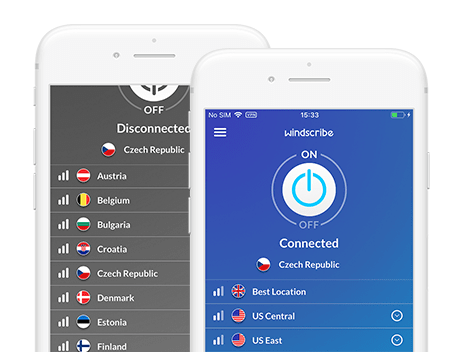You might consider please updating your post title as nothing you've mentioned relates to stability. Proper functioning yes, stability perhaps no.
I have been using OS X Server since it first existed, with Apple certification (ACSA as long as it existed) for same.
All of my installations have been and are rock-solid. Uptimes going on over 2 years (just checked one now, 733 days), apart from required reboots for updates.

Below is short instruction what to do if you want to connect Windows SSTP VPN from MacOS. Prerequisites: Homebrew installed - see here. Run terminal and install sstp-client. Brew update brew install sstp-client In order to connect to your SSTP VPN with login and password use the following command line.
I do not use OS X Server for VPN (not since the 10.6 days) and best practices mandate having your VPN connectivity at the network boundary, not behind NAT and/or a firewall.
Profile Manager is one service that I've used as little as possible because it is indeed problematic.
In the future, I suggest you make a separate post for separate issues. It makes it easier to help, and is much better for anyone else in the future searching about an issue that could have something helpful buried in amongst your discussion of a number of items :-)
Instead, please try to limit a given post to request for input about a specific problem, and state the exact version of OS X Server (10.10.5 as you noted) & clients (unknown as of yet) in use, troubleshooting steps taken, log excerpts during problem(atic) behavior, etc.
Are profiles working with all but the 1% and that's what you're asking for help with ?
Honest question, it's not clear to me just yet.
Personally I'd suggest trying Meraki MDM for managing devices & distributing Profiles, and using Profile Manager just for creation & editing of the Profiles themselves.
Best Free Vpn For Mac
Edited Oct 15, 2015 at 21:01 UTCThis guide will you take you each step of the way through setting up a VPN on your Mac. The steps and screenshots used in this tutorial are from OS X 10.10 (Yosemite) but are nearly identical to previous versions of OS X, so you should have no trouble following along, even if you’re not using Yosemite.
If you don’t have a VPN service yet, I strongly recommend and endorse the VPN service provided by Private Internet Access, which works perfectly with OS X on any Mac.
- I tried hard some time back to find the answer to this same question to no avail. All the free ones either had unreliable connections or could not support our corporate configuration.
- I’d like to sign up for Protonmail mail and VPN (pay versions). I work with the Mac platform, from Sierra down to 10.5.8. Can you tell me whether your VPN will work on my older machines (e.g. Mac G5 running OSX 10.5.8 leopard or a Mac G4 running.
- These services are best among the free VPN services. Hotspot Shield - Offers good security and has a no-log policy. TunnelBear VPN - It offers 500MB of data with decent speed and AES-256 encryption and has a no-log policy as well. Hide.me VPN - Offers good privacy and technical support. You will not be obstructed by advertisements as well.
Best Vpn For Windows 10
Best Vpn For Mac Os
- Let’s get started. Click the Apple Button from the Menu Bar, and select System Preferences….
- Locate the Network button, and give it a click.
- From the menu on the left side of the Network window, there’s a list of all your current connections (whether they’re in use or not). To add a VPN connection, click the “plus sign” ( + ) at the bottom of your Network connections list (see screenshot below).
- Click the “up and down arrow” icon at the end of the Interface: drop down menu.
- Select VPN from that list.
- For the sake of this tutorial we’re going to create an L2TP over IPSec VPN connection. Without having to install any additional software, OS X supports the VPN protocols L2TP (over IPSec), PPTP and Cisco IPSec. If you’re using PPTP or Cisco IPSec you should still be able to follow along without any problems, the steps are quite similar.
- Give your Service Name:, a name. The name itself doesn’t matter, but something descriptive is always best. That way you’ll always know which VPN you’re connecting to, especially if you set up multiple VPNs. Click the Create button when you’re done.
- Back in the main section of the Network window is where you’ll configure the first part of your VPN connection. Leave the Configuration: set to Default. Enter your VPN service providers server in the Server Address: field, and your VPN user name in the Account Name: section. Now click on the Authentication Settings… button.
- You can enter your password in the Password: field if you’d like, or you can leave it blank and have your Mac ask for your VPN password each time you connect to it (which is more secure). If your VPN provider uses a Secret key, enter it in the Shared Secret: field. When you’re done, click OK
- Now click the Advanced button.
- Place a check in the box labelled Send all traffic over VPN connection and then click OK.
- Finally, make sure there’s a check in the box labelled Show VPN in the menu bar, and click Apply.
- Now locate that VPN icon in your Menu Bar (see screenshot below) and click it. Select your newly created VPN to connect to it.
- If you opted to have your Mac save your VPN connection, you should connect right away. Otherwise you’ll be prompted for your password, and then connect. Either way, you’re done! If you click the VPN icon again, it will show you how long you’ve been connected.
